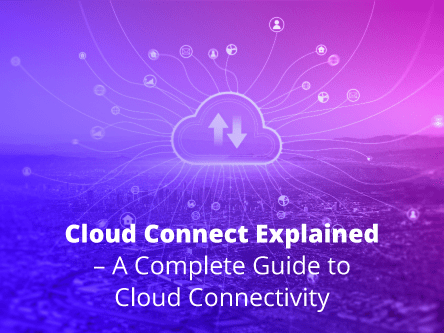Cloud technologies have improved healthcare by making data more accessible and on-demand. However, with an increase of these technologies, there is also an increase of cybersecurity risks if not properly managed and protected.
In a 2021 survey, 64% of respondents named data loss or leakage as their biggest cloud security concern, according to Statista. Therefore, how healthcare companies manage and secure their networks is as critical as any other form of security.
Complexity in healthcare will only increase as new innovations and developments require new regulations and security guidelines. It is vital for healthcare organisations to not only adopt cloud technology, but also understand how to leverage it to accelerate transformation into the future.
Keeping Up with the Cloud
The pandemic created a whole range of new challenges for businesses including how to deal with cloud provider networking inefficiency, changing and increasing network infrastructure costs, and lost business and revenue opportunities.
And new technologies are becoming increasingly accessible and are constantly evolving to meet changing needs and demands, sometimes caused by cloud technologies. Examples include the simplification of networking and security, with hassle-free configuration and network onboarding, and functions to overcome the skillset gap in public cloud.
And the ability to meet regulatory and compliance obligations, particularly across diverse or distributed sites including both cloud and business sites is critical.
Ultimately, these new functions are becoming available for all healthcare organisations who face the same challenges as any other business – and these functions combined with the benefits of working with the cloud aim to reduce CAPEX and OPEX whilst increasing overall performance.
The Security Guidelines Applicable to Healthcare Service Providers
Generally, the following are the key areas of security driving regulatory impact on networking:
- Access to the network – COVID-19 has forced healthcare providers online which has increased accessibility, but decreased data security. Only those permitted to access certain types of data, system and infrastructure should be able to, and access should be easily maintainable. This means effective management of users and other system access.
- Data-in-motion security – When data is in transit or moving between systems, sites and even countries, it must be made as secure as possible.
- Auditability – Many regulators stipulate that any activity and change must be reviewable, trackable and open to audit. Keeping a consistent and linked path showing all networking changes is critical.
There are a whole range of guidelines to help defend healthcare networks and their data. When using cloud services, these guidelines and the issues driving them are vital for enterprises to follow.
The reality of many cloud native tools is that they do not provide sufficient cybersecurity, and may therefore not follow data protection laws such as The General Data Protection Regulation (GDPR) and ISO 270001, to name a couple.
In some countries, there are even more stringent requirements for healthcare organisations. For instance in the UK, the legal frameworks covering how patient data must be looked after and processed are the Data Protection Act (DPA) 2018, which brought the EU GDPR into law, and the Common Law Duty of Confidentiality (CLDC).
The Data Security and Protection (DSP) Toolkit is an online self-assessment tool that allows organisations to measure their performance against the National Data Guardian’s 10 data security standards. All organisations that have access to NHS patient data and systems must use this toolkit to provide assurance that they are practising good data security and that personal information is handled correctly.
Professional bodies such as the General Medical Council and Health and Care Professionals Council also set out standards which their members must meet (aimed at local providers but applicable to all).
Simplifying Data Security in Healthcare
Healthcare organisations facing continually repeating processes such as migrations, inter-networking challenges and a lack of function consistency across multiple clouds, need to look at innovative cloud solutions to regenerate how they handle data.
Continual cycles of differing delivery needs for client services in each cloud environment creates a lack of consistency, with simple networking tasks using different approaches and set up steps.
Epsilon’s Cloud Networking service uses our private network as underlay and a cloud network platform as overlay to create an enterprise-class network inside and between public clouds, up to the VPC/VNET level. It allows customers to consume security services, such as FQDN filtering and service insertion of next-gen firewalls, to meet their security and compliance requirements.
If healthcare patients are to be protected, a reliable cloud network platform must be adopted to centralise the data, simplify operations and comply with security laws and regulations.
These security measures can be overwhelming for healthcare enterprises, but Epsilon simplifies the process. We ensure our solutions fully abide with the applicable regulations and offer expert advice and support so you can connect to the cloud with confidence.
Bonus Read: Network Healthcare Innovation
Learn how you can create a foundation for securing user data and workloads across the Cloud
Don't wait any longer, take control today
Send us a message and we’ll get back to you in a jiffy.







